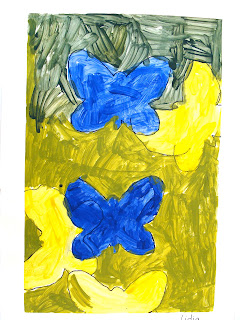 Food visual dictionary for this unit.
Food visual dictionary for this unit.  Junk food visual dictionary (print back to back with previous)
Junk food visual dictionary (print back to back with previous) Students make their own food bingo cards, 25 photos, only 16 squares, students choose which to use and where they will go so that every card is different.
Students make their own food bingo cards, 25 photos, only 16 squares, students choose which to use and where they will go so that every card is different. Power to play unit and curriculum learning outcomes are listed here. The unit is only available in English but the clear targets for learning are clearly outlined and all of the student materials are available in French as PDFs.
Power to play unit and curriculum learning outcomes are listed here. The unit is only available in English but the clear targets for learning are clearly outlined and all of the student materials are available in French as PDFs.  Example of Power to Play activity. This photo is a sample, the rest can be downloaded at the Power to Play website.
Example of Power to Play activity. This photo is a sample, the rest can be downloaded at the Power to Play website.  Food Poster Print to 11X17, paste or tape together and laminate for a poster. Or, add velcro to blank poster for an exit activity, review, centre.
Food Poster Print to 11X17, paste or tape together and laminate for a poster. Or, add velcro to blank poster for an exit activity, review, centre. Food collaborative book page, every student draws and completes, bind together for class library.
Food collaborative book page, every student draws and completes, bind together for class library. Accordion book collage (use flyers and magazines) of foods from the 4 food groups and how many servings per day children from 7-9 should have. See file for all the pages.
Accordion book collage (use flyers and magazines) of foods from the 4 food groups and how many servings per day children from 7-9 should have. See file for all the pages. Healthy snack choices mini book for "Read to Self" and "Read to Someone".
Healthy snack choices mini book for "Read to Self" and "Read to Someone". Vegetable soup book. A few versions, one requires more student input, another provides more scaffolding for writing simple sentences. Student may cut and paste vegetables, write from picture provided or draw their own. Reviews the days of the week.
Vegetable soup book. A few versions, one requires more student input, another provides more scaffolding for writing simple sentences. Student may cut and paste vegetables, write from picture provided or draw their own. Reviews the days of the week.We made food out of clay and then wrote about what we liked and didn't like in our journals. Check out the hamburgers and menues we made too.

Journal writing prompts glued into journals for some students. Gives an up close, at-your-desk example of the sentence structure we are learning. The words to use for the students own sentence are represented as a picture. I started doing this for a few students who had a very tough time generating their own writing. This was a good differentiation for them, rather than a blank page and an example up on a wall or white board.
These were cut up and in a bin for free choice too, some students I glued them in ahead of time, for others they were available if a student wanted.
 Pizza Math journal during this unit, November of grade 1.
Pizza Math journal during this unit, November of grade 1.
The very hungry caterpillar books we made during this unit (print to 8.5x14, legal paper)). Again, you will fond pages that require the students write their own sentences, and some where the stem is provided. This is a great project. We did a page a day, lundi, mardi, mercredi. We made bead caterpillars and then read them to our learning buddies.
Printing and binding instructions are in the document.


Vocabulary cards from the Eric Carle story the Very Hungry Caterpillar found on Sparkle Box.


Vocabulary cards from the Eric Carle story the Very Hungry Caterpillar found on Sparkle Box.
We had a kitchen centre with food divided into containers depending on the food group, the bowls for each group were labeled. As an exit game each student draw a food item from our plastic collection. They tell us something about it in a complete sentence to go for snack, "C'est un orange, je n'aime pas les oranges. Voici une banane, c'est jaune."
As part of this unit your school may also choose to participate in Club Moo, especially if you have a school milk program. See the details at the Club Moo website.
MORE RESOURCES AND IDEAS ON MY FOOD PINTEREST BOARD!
Songs we love:





















































